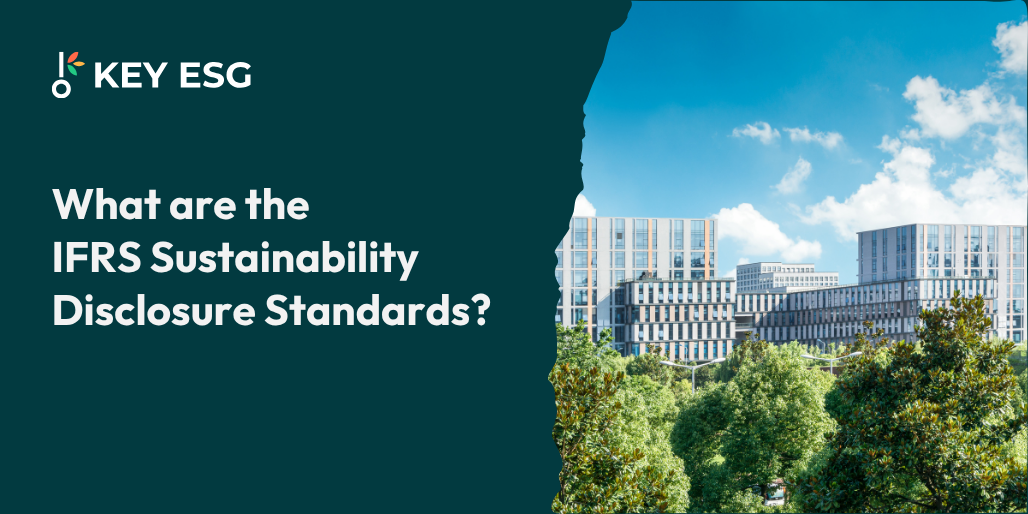In recent years, sustainability reporting has evolved from a voluntary activity into a core element of corporate accountability. As regulators, investors, and stakeholders demand higher-quality, auditable ESG data, organizations must focus on data quality, internal controls, and traceability.
This shift is no longer optional - sustainability data must now be investor-grade: verifiable, complete, consistent, and defensible.
The regulatory push for auditable ESG data
Under the EU Corporate Sustainability Reporting Directive (CSRD), companies must publish sustainability statements aligned with the European Sustainability Reporting Standards (ESRS) - and these must undergo third-party assurance.
Other jurisdictions are following suit. For example:
- In the United States, California’s Climate Corporate Data Accountability Act (SB 253) will require companies to disclose Scope 1 and 2 greenhouse gas emissions beginning in 2026. These disclosures must be independently verified at a limited assurance level starting in 2026, progressing to reasonable assurance by 2030.
- Colorado and New York are developing similar climate disclosure frameworks that are expected to include external assurance requirements once regulations are finalized.
The message is clear: ESG data must be as reliable and auditable as financial data.
The Data Challenge: Spreadsheets and Siloes
Many organizations still depend on spreadsheets, emails, and disconnected systems - a risky approach that leads to:
- Inconsistent or missing data
- Version control issues
- Audit delays and disputes
Without a structured, system-driven approach, it’s impossible to maintain data accuracy, completeness, and audit readiness.
Building auditability into the KEY ESG Platform
KEY ESG has designed its platform with auditability and sustainability data quality at its core. Below are five embedded capabilities that help organizations achieve accurate, transparent, and auditable ESG data.
1. Real-Time Data Guardrails
When users input data, the system displays the previous year’s value side-by-side — creating instant context and checks.
Benefits:
- Detect outliers and anomalies instantly
- Identify missing data points early
- Provide contextual insights for trends and explanations
Result: fewer downstream corrections and faster audit preparation.
2. Evidence Document Uploads
Every data point can include supporting documentation (invoices, reports, certifications).
Benefits:
- Data collectors can attach proof directly
- Reviewers can quickly identify missing evidence
- A centralized repository replaces messy email trails
This creates a single source of truth for sustainability data and evidence.
3. Review and Sign-Off Workflow with Commentary
Organizations can assign reviewers to specific data points, manage review stages, and maintain a transparent audit trail.
Features include:
- Sequential or parallel reviews by topic (safety, operations, environment)
- In-line comments and discussions
- Full version and sign-off tracking
Outcome: Clear accountability and audit-ready documentation of review activity.
4. Impartial Reviewer (Read-Only) Access
Administrators can grant read-only access to internal or external reviewers.
Benefits:
- Auditors can explore data and methodologies safely
- Stakeholders can create customized saved views
- Full transparency without compromising data integrity
This streamlines external assurance by making all context instantly accessible.
5. Auditable Carbon Emissions Export
With one click, users can export audit-ready emissions data - including formulas, emission factors, and assumptions.
Benefits:
- All inputs and outputs are bundled coherently
- Full traceability of calculations
- Reduced manual preparation for external reviews
In short: every emission number can be tracked back to its source.
Future-proofing ESG reporting
To meet evolving sustainability reporting requirements, companies need more than data collection tools - they need built-in quality control.
By embedding audit logic and quality checks directly into workflows, you can:
- Minimize manual errors and versioning issues
- Reduce late-stage rework
- Strengthen trust with auditors and investors
- Build an enduring foundation for sustainability data quality and auditable ESG reporting
Ready to elevate your ESG data quality?
Discover how KEY ESG helps organizations build auditable, investor-grade sustainability data. Book a demo to see the platform in action and explore integrations with your EHS, operational, or financial systems.
In recent years, sustainability reporting has evolved from a voluntary activity into a core element of corporate accountability. As regulators, investors, and stakeholders demand higher-quality, auditable ESG data, organizations must focus on data quality, internal controls, and traceability.
This shift is no longer optional - sustainability data must now be investor-grade: verifiable, complete, consistent, and defensible.
The regulatory push for auditable ESG data
Under the EU Corporate Sustainability Reporting Directive (CSRD), companies must publish sustainability statements aligned with the European Sustainability Reporting Standards (ESRS) - and these must undergo third-party assurance.
Other jurisdictions are following suit. For example:
- In the United States, California’s Climate Corporate Data Accountability Act (SB 253) will require companies to disclose Scope 1 and 2 greenhouse gas emissions beginning in 2026. These disclosures must be independently verified at a limited assurance level starting in 2026, progressing to reasonable assurance by 2030.
- Colorado and New York are developing similar climate disclosure frameworks that are expected to include external assurance requirements once regulations are finalized.
The message is clear: ESG data must be as reliable and auditable as financial data.
The Data Challenge: Spreadsheets and Siloes
Many organizations still depend on spreadsheets, emails, and disconnected systems - a risky approach that leads to:
- Inconsistent or missing data
- Version control issues
- Audit delays and disputes
Without a structured, system-driven approach, it’s impossible to maintain data accuracy, completeness, and audit readiness.
Building auditability into the KEY ESG Platform
KEY ESG has designed its platform with auditability and sustainability data quality at its core. Below are five embedded capabilities that help organizations achieve accurate, transparent, and auditable ESG data.
1. Real-Time Data Guardrails
When users input data, the system displays the previous year’s value side-by-side — creating instant context and checks.
Benefits:
- Detect outliers and anomalies instantly
- Identify missing data points early
- Provide contextual insights for trends and explanations
Result: fewer downstream corrections and faster audit preparation.
2. Evidence Document Uploads
Every data point can include supporting documentation (invoices, reports, certifications).
Benefits:
- Data collectors can attach proof directly
- Reviewers can quickly identify missing evidence
- A centralized repository replaces messy email trails
This creates a single source of truth for sustainability data and evidence.
3. Review and Sign-Off Workflow with Commentary
Organizations can assign reviewers to specific data points, manage review stages, and maintain a transparent audit trail.
Features include:
- Sequential or parallel reviews by topic (safety, operations, environment)
- In-line comments and discussions
- Full version and sign-off tracking
Outcome: Clear accountability and audit-ready documentation of review activity.
4. Impartial Reviewer (Read-Only) Access
Administrators can grant read-only access to internal or external reviewers.
Benefits:
- Auditors can explore data and methodologies safely
- Stakeholders can create customized saved views
- Full transparency without compromising data integrity
This streamlines external assurance by making all context instantly accessible.
5. Auditable Carbon Emissions Export
With one click, users can export audit-ready emissions data - including formulas, emission factors, and assumptions.
Benefits:
- All inputs and outputs are bundled coherently
- Full traceability of calculations
- Reduced manual preparation for external reviews
In short: every emission number can be tracked back to its source.
Future-proofing ESG reporting
To meet evolving sustainability reporting requirements, companies need more than data collection tools - they need built-in quality control.
By embedding audit logic and quality checks directly into workflows, you can:
- Minimize manual errors and versioning issues
- Reduce late-stage rework
- Strengthen trust with auditors and investors
- Build an enduring foundation for sustainability data quality and auditable ESG reporting
Ready to elevate your ESG data quality?
Discover how KEY ESG helps organizations build auditable, investor-grade sustainability data. Book a demo to see the platform in action and explore integrations with your EHS, operational, or financial systems.


.png)


%20(1).png)
